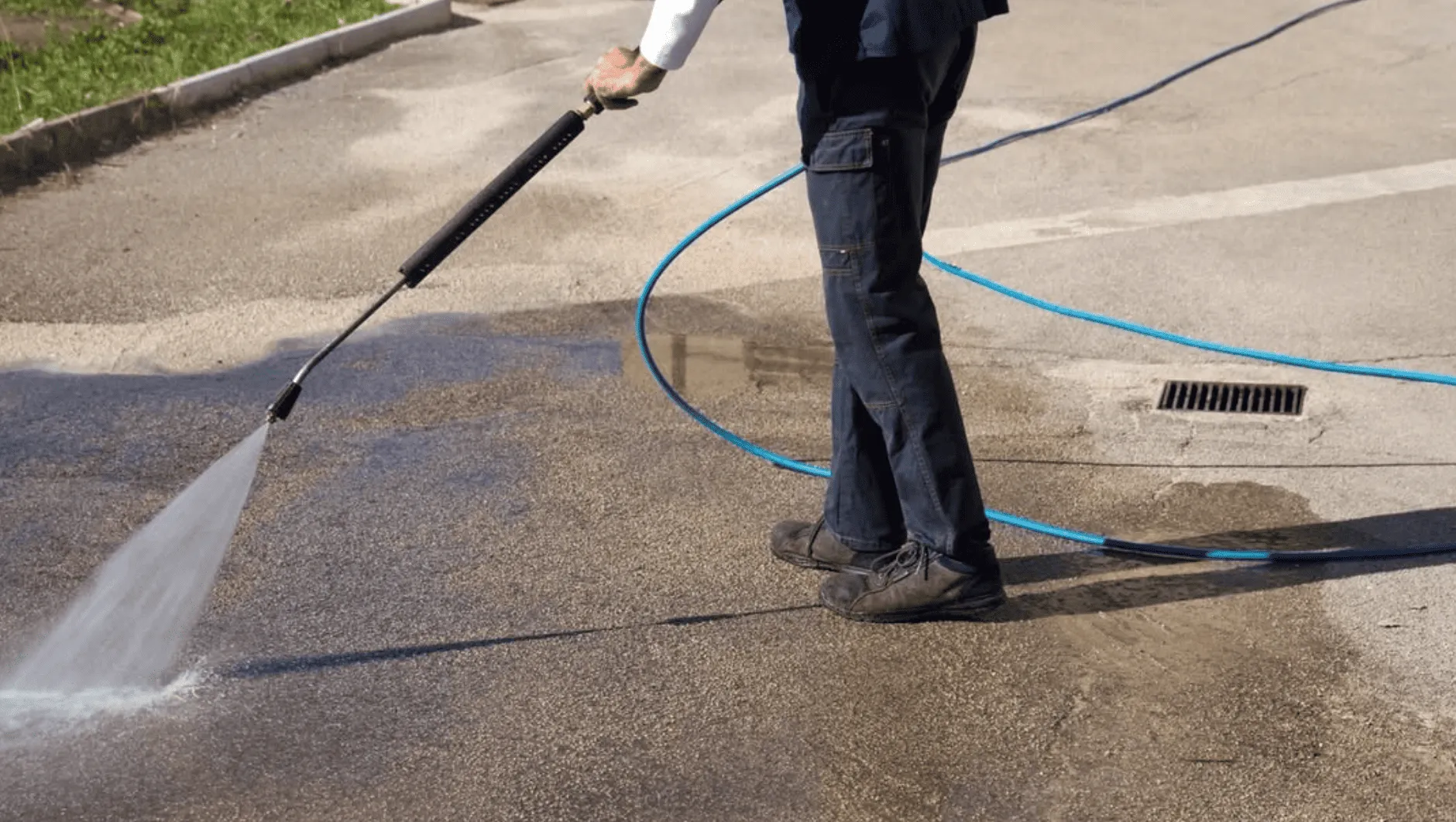Driveways, patios and floors can get dirty and stained over time and affect their appearance and longevity. Cleaning these surfaces is key to maintaining them and boosting curb appeal. This guide covers the best ways for cement cleaning, including pressure washing, chemical solutions and manual methods and tips for getting the best results.
Pressure Washing
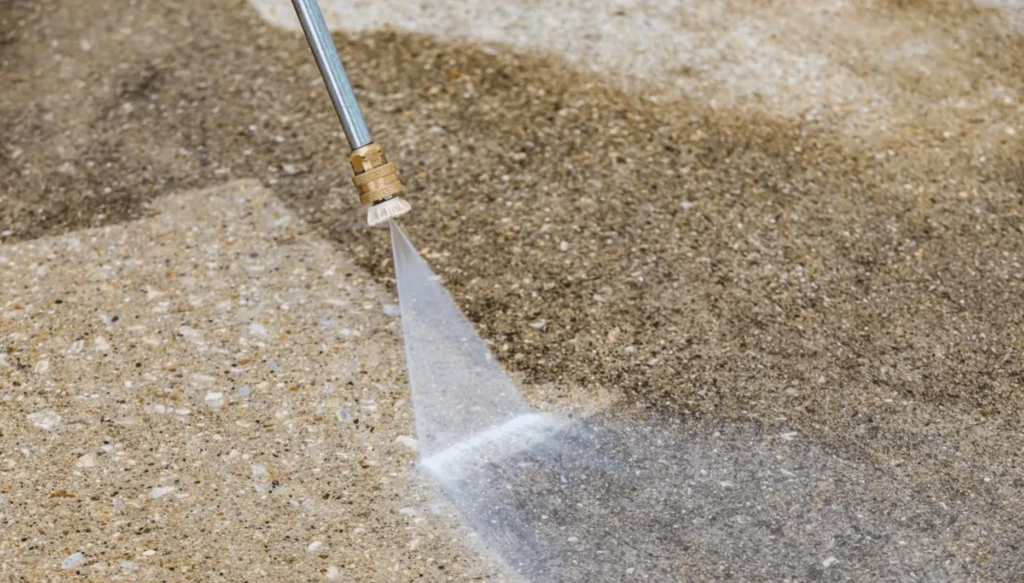
Pressure washing is one of the best ways to clean concrete surfaces, including driveways, patios and floors. You can remove dirt, grime and tough stains with a pressure washer. Here’s how:
- Choosing the Right Pressure: For concrete driveways and other surfaces 3,000 to 4,000 PSI is usually recommended. Adjusting the pressure will help you avoid damage and get a good clean. Higher pressure for tough stains and lower for regular cleaning.
- Choosing the Right Nozzle: A 25-degree nozzle is usually good for most concrete surfaces. It’s a good balance of pressure and coverage for tough stains and regular surface dirt.
- Pre-Treating Stains: For stubborn stains like grease, rust or oil stains pre-treat with a cleaning solution before pressure washing. This will break down the stain making it easier to remove. Let the cleaner sit for the recommended time then use the pressure washer to rinse the area thoroughly.
- Using Clean Water: Make sure your pressure washer is connected to a clean water source to avoid introducing more contaminants to the concrete surface. Use a garden hose or pressure hose to supply water to the washer.
Pros: Good for large areas and can remove many types of stains. Quick for concrete surfaces.
Cons: Can damage delicate surfaces. Start with lower pressure and test on a small area.
Chemical Solutions
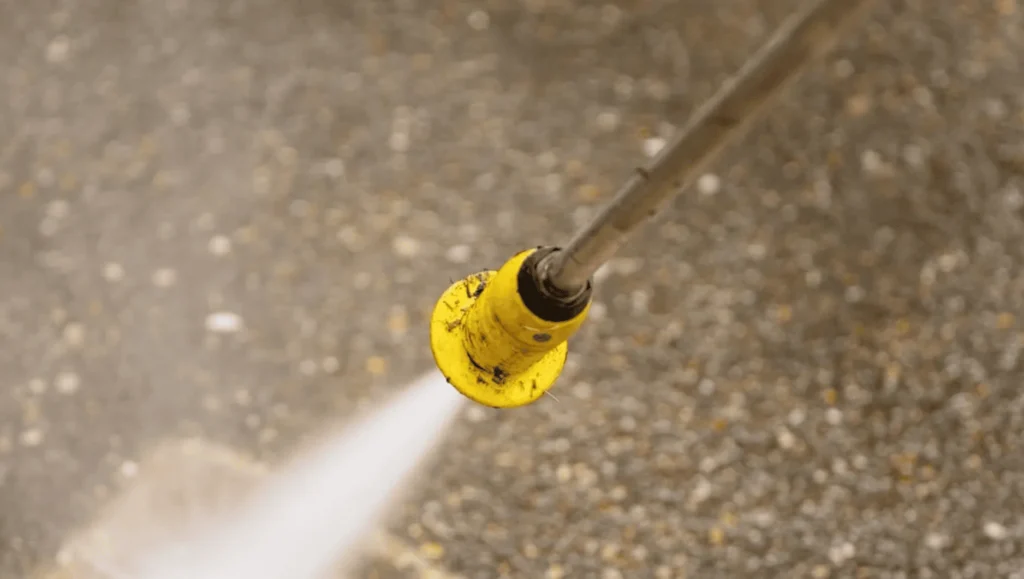
Chemical cleaners are good for specific types of stains and deeper cleaning. Different stains need different chemical treatments:
- Degreasers: Oil and grease stains on concrete driveways and patios can be tough to remove. Use a degreaser for concrete surfaces. Apply to the stained area, let it sit as instructed and then scrub or rinse off.
- Acid-Based Cleaners: For mineral deposits, rust stains or efflorescence, acid-based cleaners like hydrochloric acid or oxalic acid can work. But use with caution as they can damage the concrete if not neutralized properly. Always follow the instructions and use safety gear, gloves and eye protection.
- Bleach Solutions: Chlorine bleach is good for removing mold and mildew from concrete surfaces. Mix bleach and water (usually a 1:10 ratio) and apply to the area. Let it sit for a few minutes before scrubbing and rinsing.
- Vinegar and Baking Soda: For a more natural approach, a mixture of vinegar and baking soda can work for some stains. This is gentle on concrete and less likely to damage.
Pros: Chemicals can target specific stains and are often more effective than mechanical methods alone.
Cons: Chemicals require careful handling and neutralization and can have environmental or health impacts if not used properly.
Scrubbing and Manual Cleaning
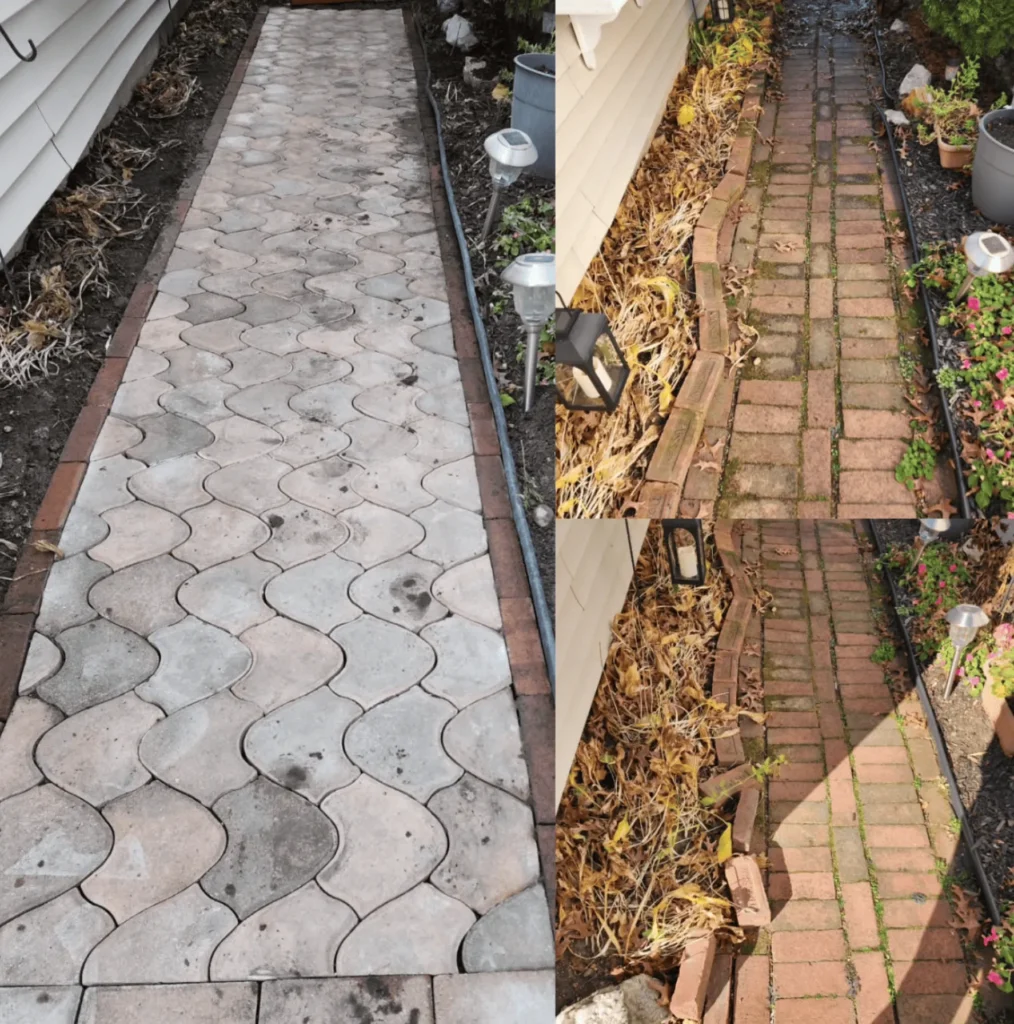
Manual cleaning is good for smaller or delicate areas where pressure washing or chemicals might be too harsh. Use the following tools and methods:
- Scrub Brush: A stiff-bristled brush is good for scrubbing concrete surfaces and removing stubborn stains. For larger areas, use a push broom with stiff bristles.
- Cleaning Solutions: Mild detergent or a mixture of warm water and vinegar can work for general cleaning. Apply to the surface, scrub with a brush and rinse with clean water. Don’t use strong detergent or harsh chemicals that can damage the concrete.
- Basic Tools: Use basic tools like a garden hose for rinsing, a vacuum for loose debris and a scrubbing brush for detailed cleaning.
Pros: Controlled cleaning for delicate or small areas. Good for maintenance and less aggressive cleaning.
Cons: Time-consuming and labour-intensive compared to outdoor pressure washing.
Steam Cleaning
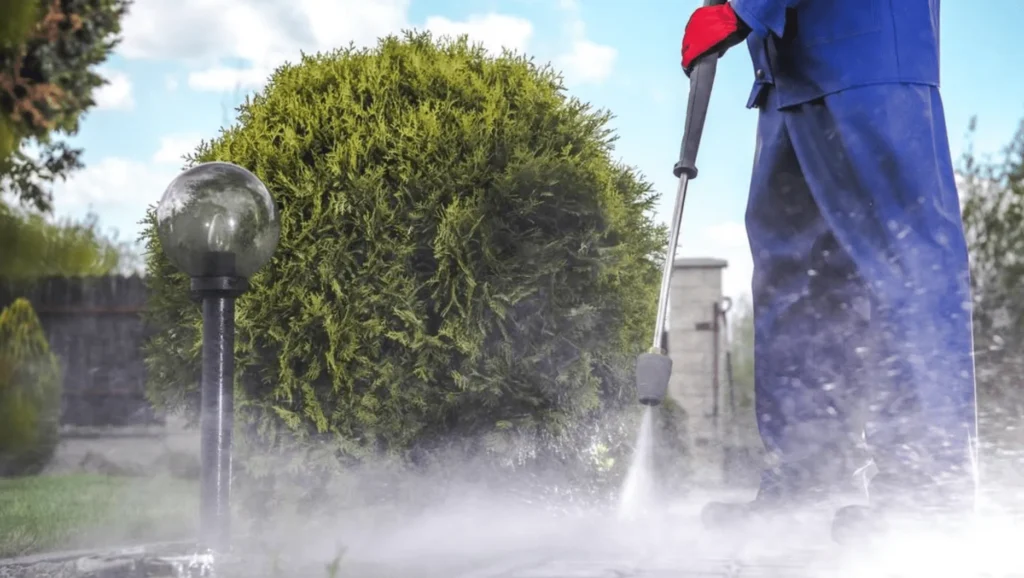
Steam cleaning is an eco-friendly method that uses hot steam to clean concrete surfaces. This method is good for removing dirt and killing bacteria without chemicals.
- Professional Equipment: For best results, use a professional steam cleaner designed for concrete surfaces. Make sure the steam cleaner maintains the right temperature and pressure.
- Application: Steam cleaning is good for surface dirt and grime. It’s perfect for sensitive areas where chemicals might be harmful.
Pros: Eco-friendly and chemical-free.
Cons: Requires specific equipment. Not all stains.
Sealing and Protecting
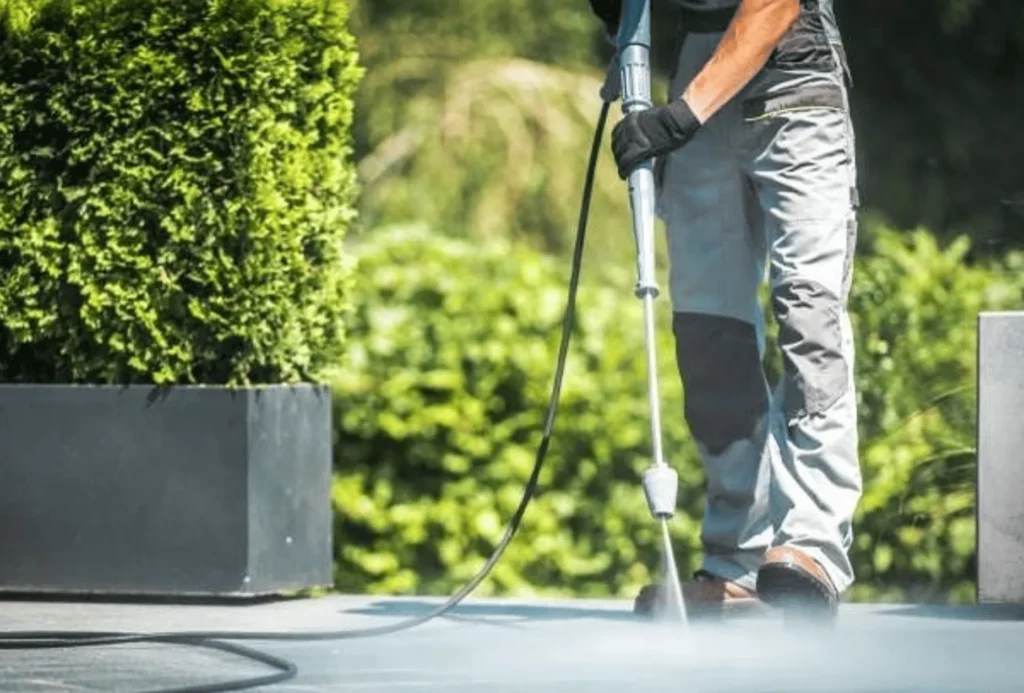
After cleaning, sealing concrete surfaces will give extra protection and keep them looking good. This is important for extending the life of the concrete and reducing future maintenance.
- Choosing the Right Sealer: Choose a concrete sealer for your surface, whether it’s a penetrating sealer or a surface sealer.
- Application: Follow the manufacturer’s instructions for applying the sealer. This means clean the surface thoroughly, apply the sealer evenly and let it cure.
Benefits: Protects against stains, wear and environmental damage. Extends life of concrete surfaces.
Drawbacks: Adds an extra step and cost to the cleaning process.
Conclusion
Cleaning concrete surfaces requires a combination of good cleaning methods and good tools. Whether it’s pressure washing, chemical solutions or manual scrubbing, each has its pros and cons. Regular cleaning and protective measures like sealing will keep your concrete surfaces looking good.
FAQ
How often should I clean my concrete surfaces?
Regular maintenance is key to keeping concrete surfaces looking good. For high traffic areas like concrete driveways, a deep clean every 6-12 months is recommended. For less used surfaces, once a year may be enough.
Can I use household cleaners on concrete surfaces?
Household cleaners can be used but it’s better to use concrete specific cleaners for better results. Don’t use harsh chemicals that can damage the surface or be less effective.
Is pressure washing safe for all types of concrete surfaces?
Pressure washing is generally safe for most concrete surfaces like driveways and patios. But use the right pressure and nozzle to avoid damage. Always test in a small, inconspicuous area first.
How do I get rid of stubborn stains on concrete?
For tough stains like grease, oil or rust use specialized chemical cleaners or degreasers. Apply the cleaner, let it sit, then scrub or rinse. For best results combine chemical treatment with pressure washing if needed.
What precautions should I take when using chemical cleaners?
Always wear protective gear like gloves and safety glasses when using chemical cleaners. Follow the product’s instructions, ensure good ventilation and test on a small area first to avoid any adverse reaction.
